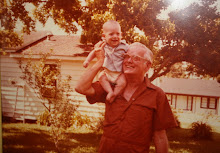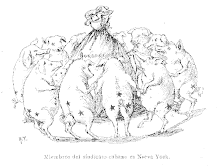In The Unmasterable Past, historian Charles Maier heuristically compares the historian's role to the adversarial method of a lawyer. In an American courtroom “no lawyer is responsible for truth but only for a stylized text or dialogue that places his or her client in the most favorable light.” Maier is quick to condemn this approach; he insists that few historians would be comfortable with such a comparison. He might be shocked to learn that in the passion-filled historiography of the Spanish Civil War the aversion to this method appears decidedly less pronounced. Hispanists have found in the origins of the war a unique opportunity to draw ideological lines in the sand and, therefore, contribute the failure of the Second Republic to either the zealously revolutionary character of the Left or the fascism of the Right. On both sides, tendentious historians use inflammatory language and wield clumsy counterfactuals to promote their chosen position. The inevitable consequence of this standoff is the academic equivalent of a sandbox quarrel, a veritable “they started it” style argument with no discernible end.
This polarized situation both parallels and originates with the Second Republic's short history of factious, uncompromising political behavior—itself a product of the many pronunciamients of the mid-nineteenth century. As the trials of the Second Republic bear out—the failed Sanjurjada of 1932, the Anarcho-syndicalist insurrection of 1933, the failed revolution of 1934—neither side was willing to accept the role of loyal opposition. For both Left and Right, the Republic was not a format for representing divergent ideas and interests, “but rather,” as Stanley Payne explains, merely “the institutional matrix for a series of far-reaching reforms.” Franco’s successful military dictatorship continued the tradition well into the 1970s. Not surprisingly, in the years since Franco, Spanish historians have railed against the old narrative. In dramatic contrast to the situation just a generation ago, it's now quite common for historians within Spain to emphasize the democratic pedigree of the Left to the detriment of the Right. Recently, however, a reaction to the reaction has emerged. History popularizers like Pío Moa along with venerable hispanists like Stanley Payne have increasingly vented their frustration with the now-accepted reductionist terminology that equates the Left with Republican democracy and the Right with dictatorship and democratic repression. They propose historians revisit the role the Left played in the demise of the Second Republic.
In The Collapse of the Spanish Republic, Stanley Payne sketches the tortuous history of the fragile Spanish democracy and condemns both sides for anti-democratic behavior. Payne demonstrates convincingly that neither side was interested in maintaining the democratic system for anything other than the implementation of partisan reforms. After the failed insurrection of 1934, itself anti-democratic, the “CEDA sought a counterreform, especially in religious, military, and socioeconomic policy.” From their position of power, they closed down hundred of jurados mixtos, established the legal category of huelga abusiva, and attempted to reverse the agricultural reforms instituted during the previous biennium. For its part, the Popular Front, after its victory in 1936, used the comisión de actas to further minimize the few successes of the opposition. As Payne explains, this “meant in effect that the victors in each election had the power to sit in judgment on the losers and determine if their parliamentary representation should be reduced still further.” In areas where the Popular Front had decisive wins, the irregularities were mostly ignored. However, in areas where the results favored the Right, places like Cuenca and Granada, complete annulments were declared.
While Payne is careful to condemn both sides for dismantling the republic, he heaps the vast majority of his criticism on the Left. As Payne sees it, the left's anti-democratic stance springs from their support for a socialist/communist revolution. Consistent with the Comintern line, the PCE and other like-minded groups sought to use “the façade of democratic legitimacy to strengthen its position.” The proposed estrategia del desgaste advocated the use of strikes, violence and the seizure of property to weaken the capitalist system and pave the way for revolution. Propaganda and violence constituted a large part of this strategy. Payne speaks of a “reign of terror” against landowners in the countryside. He quotes Calvo Sotelo as he condemns the “violence” and “revolutionary destruction” coming from the left; he condemns the leftist propaganda for inducing states of hysteria resulting in riots, church burnings, and killings; he blames Casares Quiroga for declaring the Right “enemies” of the Republic; he demonstrates how the Popular Front used terms like “fascist” and “enemies” to conflate “the Republic itself with the policies of the left.” And, he draws a connection between the rise of the Falange and the indiscriminate repression of the Right by the Left. In essence, Payne's position is that the extreme anti-democratic policies of the Left contributed heartedly to the equally extreme anti-democratic policies of the Right.
At times Payne's conclusions seem overly tendentious and extreme. In his zeal to break with the politically correct historical narrative, he often over-states his case. This seems especially obvious in his treatment of the CEDA. He absolves the group of any complicity in the rise of violence that precipitated the 1936 golpe. He ridicules the Left for being so naïve as to believe their own extreme rhetoric—specifically that the CEDA constitutes a “fascism as fierce and inhuman as that of the Nazis.” Yet he accepts without question the statements that declare the CEDA willing to “continue to cooperate with the government.” In his mind they are accountable only for being “ambiguous about [their] ultimate goals.”
Notwithstanding these criticisms, his indictment of the Left as hearty contributors in the escalation of rhetoric is an important contribution to the historiography of the civil war. The PCE, while still marginal, was particularly overt in its support for radical reforms. They advocated the confiscation of land, the cancellation of debt, the nationalization of industry, the suppression of the military, and an alliance with the Soviet Union. Francisco Largo Caballero, enthusiastically deemed the “Spanish Lenin,” declared unambiguously that the Republic was merely the means by which a “dictatorship of the proletariat” could be achieved. Indalecio Prieto, a leading organizer of the 1934 revolution, encouraged overturning the government even while attempting to temper the escalating violence—a violence he blamed on the repression that followed the October revolution. In light of all this, Chris Ealham's criticisms of Payne seem especially ridiculous. It's true, as he so states, that a politician's words are not always the best indicator of his intentions. And for this reason, Largo's and Prieto's words should be taken with a grain of salt. However, it's quite another thing to assume that the Right was overreacting by taking them at their word. Barring any access to a magical window into the future, to accept their threats as real seems entirely reasonable. This does not absolve the right of any wrongdoing. It does, however, complicate the popularly-held notions of a democratic Left being overturned by a fascist, anti-democratic Right.
Not surprisingly, few Spanish historians have been convinced by this argument. Helen Graham, as evidenced in The Spanish Civil War: A Very Short Introduction, continues to hold firmly to an interpretation of the war as the inevitable outcome of an anti-democratic Right's bid for power. Graham states unequivocally that the military coup was a shameless “rising against mass democracy [cloaked in] a traditional political veneer.” Thus, in one sentence Graham has conveniently succeeded in wiping away all relevant complexity. She divides the battle into two neat categories: “good guys” and “bad guys”, democrats and usurpers. She ignores entirely the anti-democratic revolutionary rhetoric spewing from the Left as well as the radical nature of their proposed reforms. The 1934 October Revolution is described as simply the culmination of “frustrations on the Left.” There is no mention of how this uprising might have influenced the behavior of the Right. Nor does she bother to describe it as inherently anti-democratic.
On this point the journalist and dilettantish historian Pío Moa is particularly unmoved. The bold thesis of his Los Orígenes de la Guerra Civil Española is that the October Revolution of 1934 constituted the first battle of the Spanish Civil War; and that the Left actively pursued it. He stridently attacks the charge that the revolution was defensive in origin; this is central to his argument. Like Payne, he believes it's a foolish oversimplification of history to insist, as Graham has, that the Left was pro-democracy and the Right anti-. The civil war must be put in its appropriate historical context, he demands. The era following the First World War was a time of great change and disorder: Germany went to the Nazis, France went to the Left, Spain was wracked by Anarcho-syndicalism and cries for socialist revolution. In his opinion, the PSOE and the Esquerra chose to go to war because they felt the time was ripe to “overthrow the bourgeoisie and to fulfill the socialist revolution.” They showed little concern for democracy. And because the conflict set the tone of politics over the following 21 months before the outbreak of hostilities in 1936, it’s impossible to evaluate the origins of the civil war without considering it.
If these reasonable conclusions were all he insists on, his books would hardly be so controversial. Unfortunately for him, and by extention his arguments, his antipathy for the Left is so strong as to make him seem nostalgic for Franco. He lists a litany of abuses perpetrated on the general population by the Left during the 1934 revolution: stockpiling guns, burning churches, killing women, children and priests. Yet he minimizes and rationalizes the repression in its wake. Indeed, he even seeks to absolve the late dictator and the Right in general of much of their culpability for the civil war. He insists that it was widely believed, both inside and outside the country, that the Right would break with legality and institute a dictatorship. The fact that this didn't happen in 1934 is proof that the Right was interested in maintaining democracy. As he sees it, Franco, in his position as asesora, turned down three great opportunities to start a coup. By some fit of strange deductive reasoning, Pío Moa concludes from this that Franco valued democracy and only reluctantly rose up in 1936.
It doesn't take an historian to see how some in Spain might recoil in horror at some of Pío Moa's statements. And it's unfortunate that some of his more reasonable assumptions are discounted because of this. Yet the willful oversimplification of the factors leading up to the civil war by respected historians like Helen Graham should be equally disturbing. It appears obvious that neither the Left nor the Right were able to value democracy over their own partisan interests. It's possible that Spanish historians and the Spanish public may someday come to accept this. For now, any criticism of the Left as anti-democratic remains prohibitively Francoish for mainstream opinions. For this reason, the adversarial style of history might remain a part of the debate over the origins of the Spanish Civil War for some time to come.
DP widens economic discrimination with free lunches
-
Now that Oh Se-hoon has failed to reach the minimum quorum needed to
overturn the DP’s signature
we-love-all-people-and-they-will-love-us-with-votes policy...
14 years ago











No comments:
Post a Comment